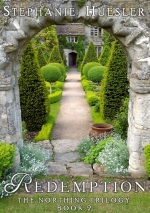 Most people in western cultures have heard the tale of the Pied Piper; but was it true, or simply a fable or an urban legend that grew into epic myth proportions, such as Robin Hood’s fame?
Most people in western cultures have heard the tale of the Pied Piper; but was it true, or simply a fable or an urban legend that grew into epic myth proportions, such as Robin Hood’s fame?
The earliest appearance of the story is connected with the stained glass window of the church of Hamelin, Germany, ca. 1300, which means that the events on which it is based happened some time before that – enough of an event to commemorate with a stained glass window. Though it was destroyed in 1660, it had been described and recorded in numerous accounts. Town records in 1384 state that it was “100 years since the event”.
There are several theories as to what could have actually happened: Perhaps the piper represented Death, and the children were carried off by him through a plague; considering the prominence of rats in the story, it’s quite plausible. It could have also been deaths caused by famine other disease, which might have arisen as a result of fewer adults to sow and harvest crops (if there had previously been a plague and killed off part of the adult population). Another theory is to do with emigration – either forced (such as slavery or inscription to the military), or voluntary (such as might happen due to a shortage of land, and the eldest son inheriting the family properties). For more information on this fascinating historical tale, click here. The German text on the early 20th century postcard is as follows, with translation:
Wandern, ach wandern, (Wandering, oh wandering,)
weit in die Fern’, (far, far away,)
Wandern, ach wandern, (Wandering, oh wandering,)
T(h)u ich so gern. (I do it gladly.)
Rastlos durcheilen T(h)äler und Höh’n, (Restless rushing through valleys and heights,)
Welt, ach so weit, (World, oh so wide,)
wie bist Du so schön. (How beautiful you are.)
Mir ward keine Liebe, (For me was no love,)
kein heimat(h)lich Land, (No home land,)
Stets weiter nur eilen, (Always only rushing farther,)
von Niemand gekannt. (Known by no one.)
Sie Sorgen und Grillen, (Their cares and moods)
die kannte ich nie, (I did not know,)
Sang und Spiel scheuchten, (Songs and games avoided,)
spät sie und früh. (both early and late)
Ein fahrender Sänger, (A travelling singer,)
von Niemand gekannt, (Known by no one,)
Ein Rattenfänger, (A rat-catcher,)
Das ist mein Stand. (That is my rank.)








 Dijon, France doesn’t just make the eponymous mustard, but has dozens of speciality mustards; when travelling through a few years ago, we picked up jars of orange mustard, fig mustard, lavender mustard and tomato mustard. They often come in hand-painted pots, though plain glass jars are common as well. The word mustard itself comes from Old French mostarde, which comes from Latin mustum, meaning “new wine”. This may also be related to a Swiss-German term Most, meaning apple juice that’s nearly fermented; it’s often sold in the autumn from farmer’s shops, if they have an apple orchard from which to produce it.
Dijon, France doesn’t just make the eponymous mustard, but has dozens of speciality mustards; when travelling through a few years ago, we picked up jars of orange mustard, fig mustard, lavender mustard and tomato mustard. They often come in hand-painted pots, though plain glass jars are common as well. The word mustard itself comes from Old French mostarde, which comes from Latin mustum, meaning “new wine”. This may also be related to a Swiss-German term Most, meaning apple juice that’s nearly fermented; it’s often sold in the autumn from farmer’s shops, if they have an apple orchard from which to produce it.



